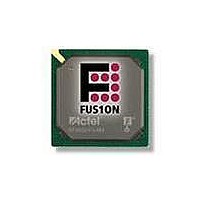AFS600-FGG256 Actel, AFS600-FGG256 Datasheet - Page 77

AFS600-FGG256
Manufacturer Part Number
AFS600-FGG256
Description
FPGA - Field Programmable Gate Array 600K System Gates
Manufacturer
Actel
Datasheet
1.AFS600-PQG208.pdf
(330 pages)
Specifications of AFS600-FGG256
Processor Series
AFS600
Core
IP Core
Maximum Operating Frequency
1098.9 MHz
Number Of Programmable I/os
119
Data Ram Size
110592
Supply Voltage (max)
1.575 V
Maximum Operating Temperature
+ 70 C
Minimum Operating Temperature
0 C
Development Tools By Supplier
AFS-Eval-Kit, AFS-BRD600, FlashPro 3, FlashPro Lite, Silicon-Explorer II, Silicon-Sculptor 3, SI-EX-TCA
Mounting Style
SMD/SMT
Supply Voltage (min)
1.425 V
Number Of Gates
600 K
Package / Case
FPBGA-256
Lead Free Status / RoHS Status
Lead free / RoHS Compliant
Available stocks
Company
Part Number
Manufacturer
Quantity
Price
Company:
Part Number:
AFS600-FGG256
Manufacturer:
Actel
Quantity:
135
Part Number:
AFS600-FGG256
Manufacturer:
ACTEL/爱特
Quantity:
20 000
Company:
Part Number:
AFS600-FGG256I
Manufacturer:
Microsemi SoC
Quantity:
10 000
Company:
Part Number:
AFS600-FGG256K
Manufacturer:
Microsemi SoC
Quantity:
10 000
- Current page: 77 of 330
- Download datasheet (13Mb)
The following signals are used to configure the RAM4K9 memory element:
WIDTHA and WIDTHB
These signals enable the RAM to be configured in one of four allowable aspect ratios
Table 2-27 • Allowable Aspect Ratio Settings for WIDTHA[1:0]
BLKA and BLKB
These signals are active low and will enable the respective ports when asserted. When a BLKx signal is
deasserted, the corresponding port’s outputs hold the previous value.
WENA and WENB
These signals switch the RAM between read and write mode for the respective ports. A Low on these
signals indicates a write operation, and a High indicates a read.
CLKA and CLKB
These are the clock signals for the synchronous read and write operations. These can be driven
independently or with the same driver.
PIPEA and PIPEB
These signals are used to specify pipelined read on the output. A Low on PIPEA or PIPEB indicates a
nonpipelined read, and the data appears on the corresponding output in the same clock cycle. A High
indicates a pipelined, read and data appears on the corresponding output in the next clock cycle.
WMODEA and WMODEB
These signals are used to configure the behavior of the output when the RAM is in write mode. A Low on
these signals makes the output retain data from the previous read. A High indicates pass-through
behavior, wherein the data being written will appear immediately on the output. This signal is overridden
when the RAM is being read.
RESET
This active low signal resets the output to zero, disables reads and writes from the SRAM block, and
clears the data hold registers when asserted. It does not reset the contents of the memory.
ADDRA and ADDRB
These are used as read or write addresses, and they are 12 bits wide. When a depth of less than 4 k is
specified, the unused high-order bits must be grounded
Table 2-28 • Address Pins Unused/Used for Various Supported Bus Widths
WIDTHA1, WIDTHA0
00
01
10
11
Note:
D×W
4k×1
2k×2
1k×4
512×9
Note:
The aspect ratio settings are constant and cannot be changed on the fly.
The "x" in ADDRx implies A or B.
Unused
[11:10]
None
[11:9]
[11]
R e v i s i o n 1
WIDTHB1, WIDTHB0
(Table
ADDRx
00
01
10
2-28).
11
Actel Fusion Family of Mixed Signal FPGAs
Used
[10:0]
[11:0]
[9:0]
[8:0]
(Table
512×9
D×W
2-27).
4k×1
2k×2
1k×4
2- 61
Related parts for AFS600-FGG256
Image
Part Number
Description
Manufacturer
Datasheet
Request
R

Part Number:
Description:
AFS600-1FGG256I
Manufacturer:
Actel
Datasheet:

Part Number:
Description:
AFS600-2FGG256I
Manufacturer:
Actel
Datasheet:











